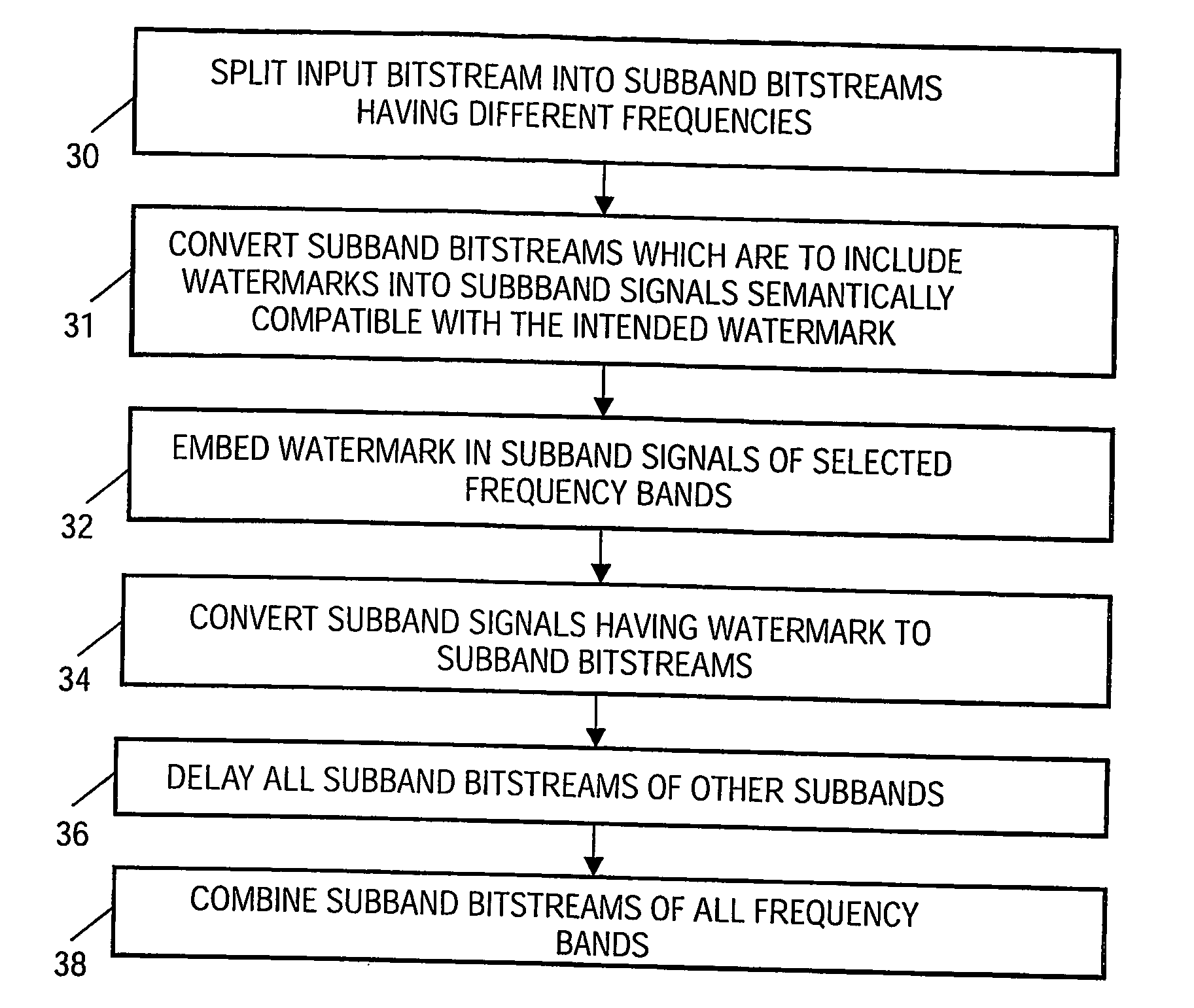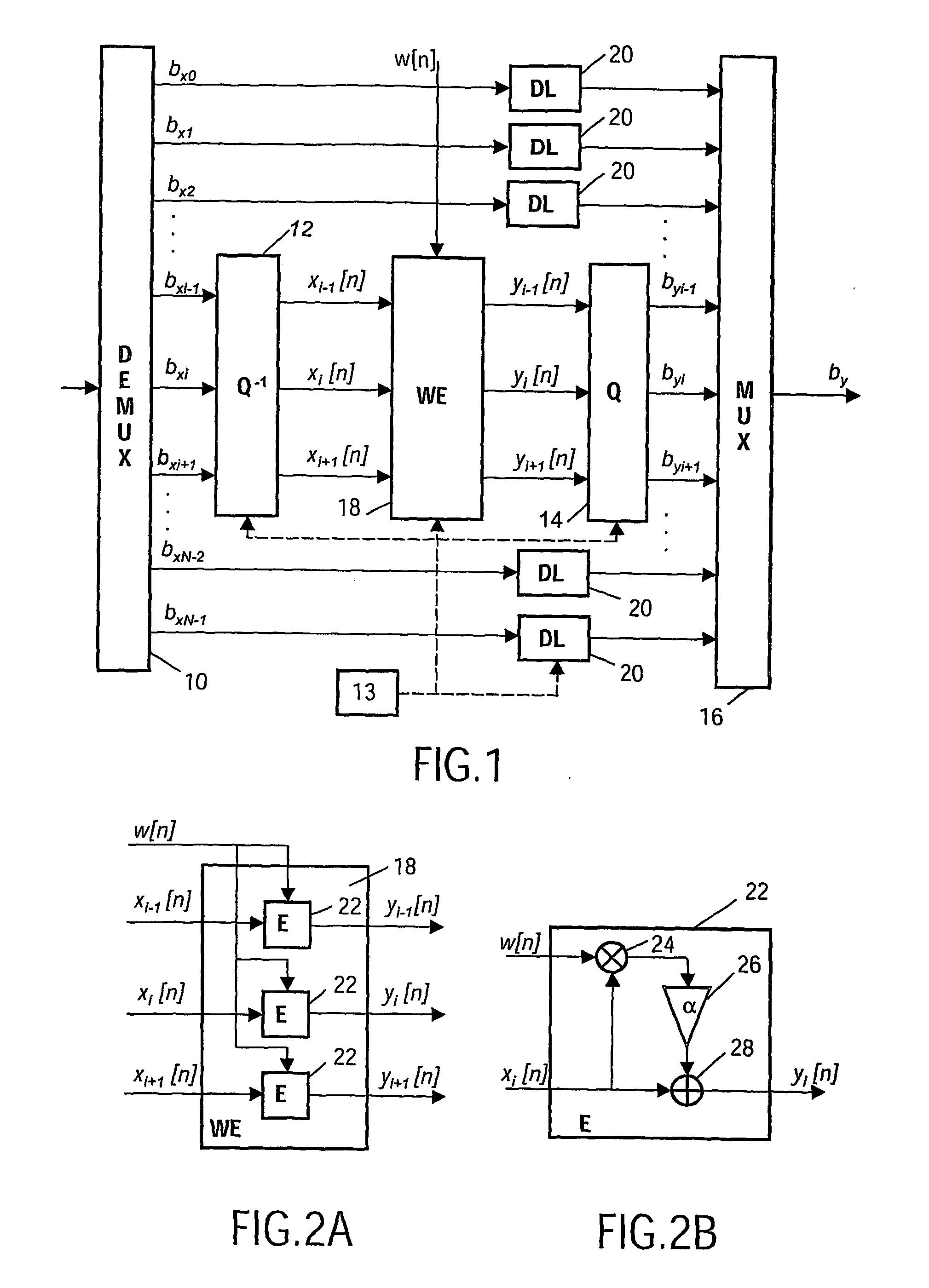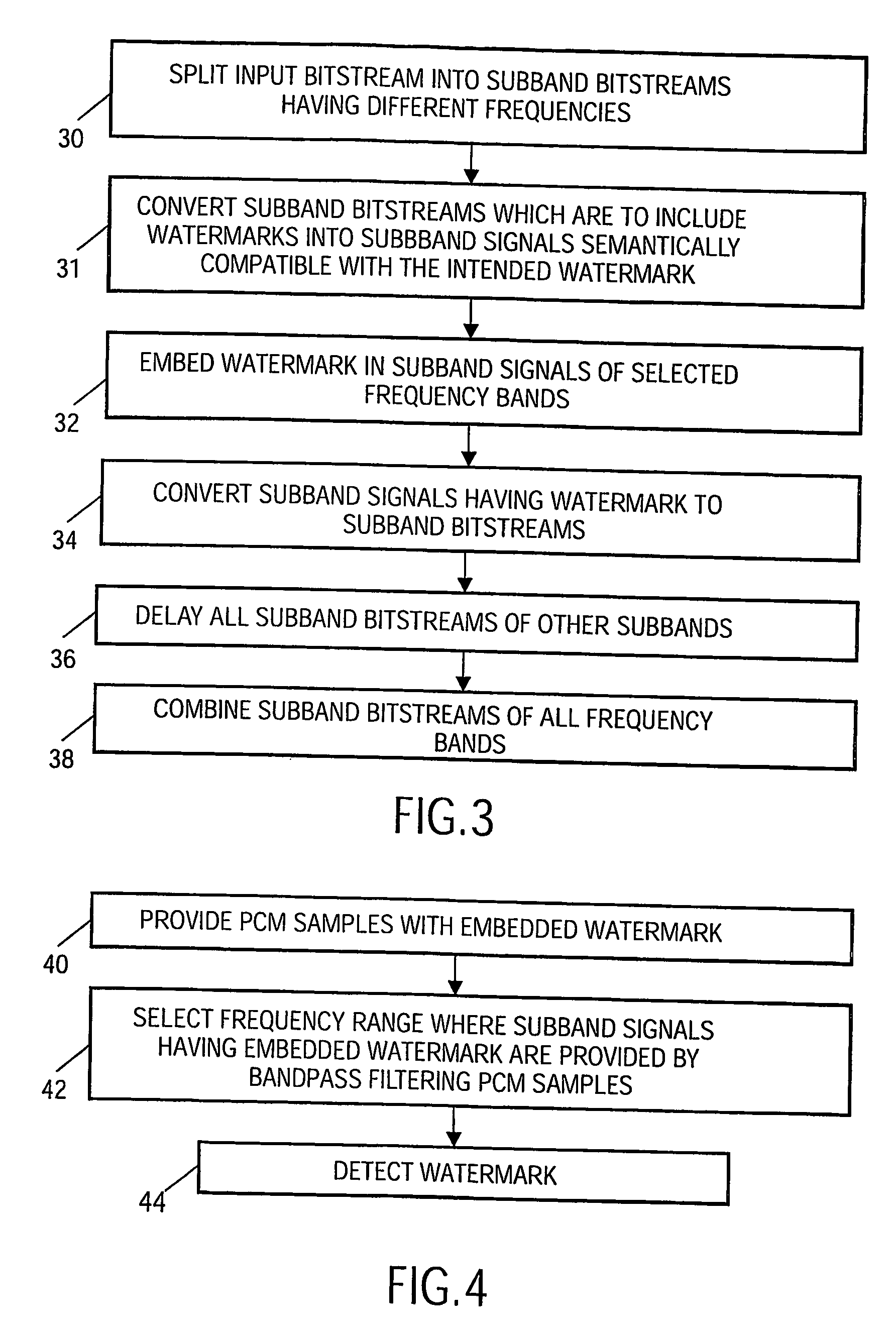Bit-stream watermarking
a technology of watermarking and data, applied in the field of additional data in media signals, can solve the problems of wide-scale illicit distribution of content material that is intended to be copyright protected, artistic renderings or other material having limited distribution rights, etc., and achieve the effect of less complex solution and less introduction of unnecessary additional artefacts
- Summary
- Abstract
- Description
- Claims
- Application Information
AI Technical Summary
Benefits of technology
Problems solved by technology
Method used
Image
Examples
first embodiment
[0051]FIG. 1 shows a block schematic of a device according to the invention for embedding a watermark in the bit-stream domain of an audio signal. The functioning of the device will now be described with reference also being made to FIG. 3, which shows a flow chart of a method according to which the device works. The device includes a demultiplexing unit 10 receiving an input bit-stream bx of a signal in order to provide N sub-band bit-streams bxo . . . bxN−1, step 30. The sub-band bit-streams bxi−1, bxi and bxi+1 that are intended to carry a watermark signal are provided to a dequantisation unit 12 applying an inverse quantisation function Q−1, step 31. In this way sub-band signals are created that are semantically compatible with the intended watermark. The dequantisation unit is typically a zero order hold circuit, which provides amplitude quantised and appropriately scaled and filtered sub-band signals xi−1[n], xi[n], and xi+1[n]. Subsequently, these sub-band signals are supplie...
third embodiment
[0066] An alternative inserting unit according to the invention for providing basically the same result is shown in a block schematic in FIG. 6. The inserting unit 50 here comprises a synthesis filter S (unit 52), which receives the sub-band signals xi−1[n], xi[n], and xi+1[n] and merges these sub-band signals into a single band limited signal xsb[m]. The single signal is then supplied to the embedder unit 22, which embeds the watermark w[m] in the signal xsb[m]. The watermarked signal ysb[m] is then supplied to an analysis filter A unit 54, which splits it into different watermarked sub-band signals yi−1[n], yi[n] and yi+1[n], which are provided in the same sub-bands as the input sub-band signals were provided in. These watermarked sub-band signals are then supplied to the quantisation unit 14 of FIG. 1.
[0067] A fourth and preferred embodiment of the invention for embedding a watermark will now be described in relation to FIG. 7. This embodiment is an equivalent to the embodiment s...
fourth embodiment
[0071] It should be realised that the upsampling and downsampling factors, can be selected freely, but are for best results dependent on the number of sub-bands involved. The watermark embedding was in the fourth embodiment essentially performed in one sub-band. It should however be realised that the embedding can in a straightforward manner be extended for more sub-bands. The number of bands can for instance be extended to cover all the sub-bands except the highest and the lowest ones, although this is often not attractive because of audibility reasons.
[0072] Now the detection of a watermark will be described. Watermarks can be detected both in the PCM domain as well as in the bit-stream or compressed domain, which two methods are summarized in FIGS. 8, 9 and 10. The functioning of the device in FIG. 8 will now be described with reference also being made to FIG. 4, which shows a flowchart of the detection method. FIG. 8 shows a block schematic of a device for a PCM domain detection...
PUM
 Login to View More
Login to View More Abstract
Description
Claims
Application Information
 Login to View More
Login to View More - R&D
- Intellectual Property
- Life Sciences
- Materials
- Tech Scout
- Unparalleled Data Quality
- Higher Quality Content
- 60% Fewer Hallucinations
Browse by: Latest US Patents, China's latest patents, Technical Efficacy Thesaurus, Application Domain, Technology Topic, Popular Technical Reports.
© 2025 PatSnap. All rights reserved.Legal|Privacy policy|Modern Slavery Act Transparency Statement|Sitemap|About US| Contact US: help@patsnap.com



